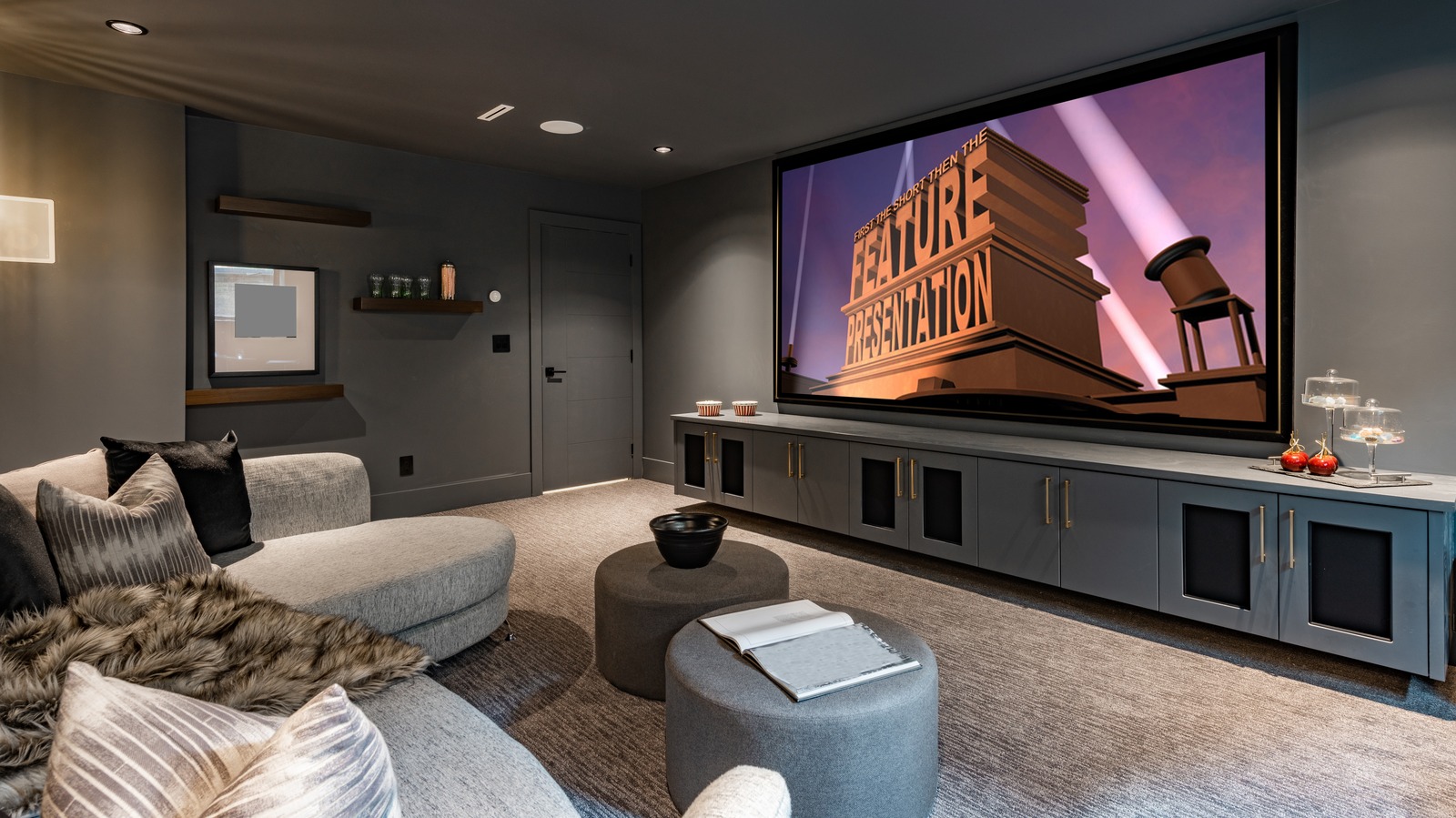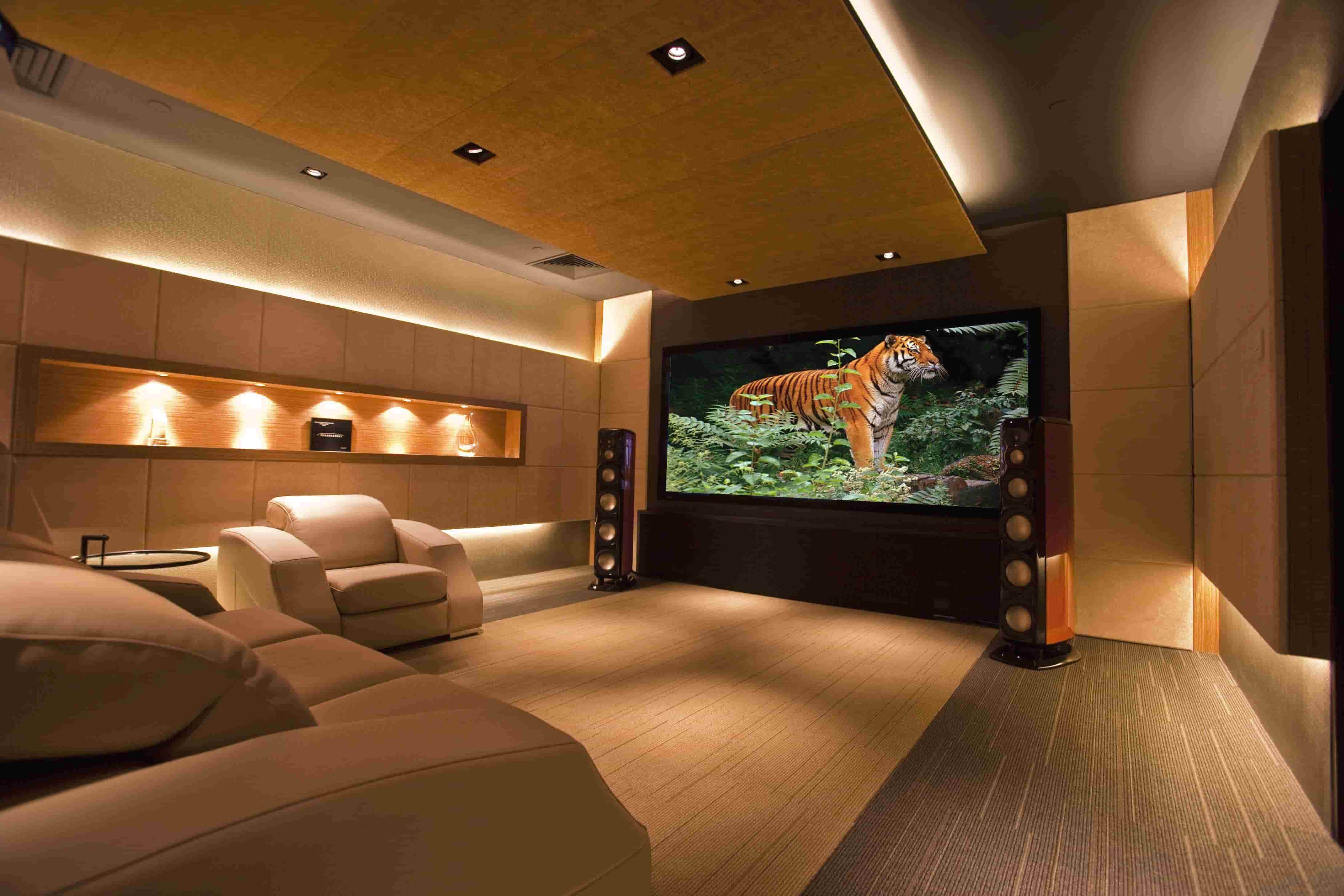Construction and Assembly

Alright, you’ve got your materials, your space is clear, and you’re ready to build. Let’s dive into the nitty-gritty of construction and assembly. This is where the real fun begins, and trust me, it’s way more satisfying than watching another Netflix series.
Tools and Equipment
Before you get your hands dirty, it’s essential to have the right tools. Think of it like preparing for a battle – you wouldn’t go into a war without proper weapons, right? Same goes for building your home theater cabinet.
- Circular Saw: This is your trusty companion for making accurate cuts in your wood.
- Jigsaw: This tool is a must-have for cutting curves and intricate shapes.
- Drill: For creating pilot holes and driving screws, this tool is your best friend.
- Screwdriver: A good screwdriver set is crucial for securing your cabinet components.
- Clamps: These are your holding hands for keeping things steady while you work.
- Tape Measure: Accuracy is key, so make sure you have a reliable tape measure.
- Level: Ensure your cabinet is perfectly straight and level using a trusty level.
- Safety Glasses: Protect your eyes from flying debris.
- Dust Mask: Keep the dust out of your lungs while you’re working.
- Work Gloves: Protect your hands and improve your grip.
Cutting and Shaping
Now, let’s talk about cutting and shaping. This is where your precision and creativity come into play. Remember, it’s all about taking those flat pieces of wood and transforming them into a masterpiece.
- Straight Cuts: For straight cuts, your trusty circular saw is the hero. Use a straight edge as a guide for accurate and precise cuts.
- Curved Cuts: For those curved and intricate shapes, your jigsaw is your go-to tool. Use a template or draw your design directly on the wood.
- Sanding: Once you’ve made your cuts, sanding is crucial for smoothing out any rough edges and creating a polished finish.
Assembly and Joining, Diy home theater cabinet
Now, it’s time to bring all those pieces together. Think of it like building a Lego set, except way more epic.
- Pocket Holes: These are small, angled holes drilled into the edges of your wood. They provide a strong and invisible way to join pieces together using screws.
- Dowels: Dowels are cylindrical rods that are inserted into pre-drilled holes in your wood. They create a strong and sturdy connection.
- Glue: Wood glue is essential for creating a strong bond between your cabinet pieces.
- Screws: Screws are your final touch for securing all the pieces together.
Cable Management
No one wants a tangled mess of wires behind their home theater cabinet. Let’s make sure your cable management is as clean and organized as your new cabinet.
- Cable Ties: These are your go-to solution for keeping cables bundled together.
- Cable Sleeves: Cable sleeves provide a neat and protective covering for your wires.
- Cable Organizers: There are various cable organizers available, from simple zip ties to more elaborate systems that can be mounted inside your cabinet.
Finishing and Protection
Your cabinet is almost complete! Now, let’s add that final touch of elegance and durability.
- Staining: Staining adds color and depth to your wood, highlighting its natural beauty.
- Painting: Painting is a great way to customize your cabinet and create a unique look.
- Polyurethane: A clear polyurethane coating protects your cabinet from scratches, moisture, and spills.
Integration and Functionality: Diy Home Theater Cabinet

Integrating your components and ensuring seamless functionality is the heart of your DIY home theater cabinet. This section guides you through the process of installing your equipment, connecting them properly, and optimizing the acoustic experience.
Component Installation
Installing components securely and efficiently is crucial for both performance and longevity.
- TV Mounting: Begin by mounting your TV to the cabinet using a sturdy TV mount compatible with its weight and size. Ensure the mount is securely fastened to the cabinet’s back panel and the TV is level.
- Speaker Placement: Carefully position your speakers within the cabinet, considering their size and optimal sound dispersion. Use speaker brackets or mounts to secure them firmly to the cabinet. Remember to account for proper spacing between speakers for optimal stereo sound.
- Receiver Installation: Install your receiver securely in the cabinet, ensuring adequate ventilation and space for its connections. Use cable ties or Velcro straps to organize cables and maintain a clean setup.
- Subwoofer Placement: Position your subwoofer strategically within the cabinet, considering its size and potential vibrations. Ensure its placement does not obstruct airflow or interfere with other components.
Audio and Video Connections
Connecting your components correctly is essential for a flawless home theater experience.
- HDMI Connections: Use high-speed HDMI cables to connect your TV, receiver, and other devices like Blu-ray players or streaming devices. HDMI cables support high-definition video and multi-channel audio, ensuring a superior viewing and listening experience.
- Speaker Wire Connections: Connect your speakers to your receiver using speaker wire. Ensure you connect the correct speaker wires to the corresponding terminals on the receiver, adhering to the positive (+) and negative (-) markings.
- Optical Audio Connections: If your receiver or TV supports it, use optical audio cables for high-quality digital audio transmission from devices like Blu-ray players or streaming devices.
- Analog Audio Connections: While less common, analog audio connections using RCA cables can be used for older devices or for specific audio outputs.
Soundproofing and Acoustics
Optimizing the acoustics of your home theater cabinet is crucial for a truly immersive and enjoyable experience.
- Sound Absorption: Use sound-absorbing materials like acoustic foam panels, carpet, or heavy curtains to reduce echoes and reverberation within the cabinet. These materials absorb sound waves, preventing them from bouncing around and creating unwanted noise.
- Sound Diffusion: Incorporate sound diffusers to scatter sound waves and prevent them from reflecting directly back to the listener. This helps create a more even and balanced sound distribution.
- Cabinet Design: Consider the shape and materials of your cabinet for optimal sound performance. A well-designed cabinet with appropriate insulation can significantly reduce sound leakage and improve the overall acoustic experience.
Ventilation and Cooling
Proper ventilation is crucial for the longevity and performance of your electronic components.
- Airflow Design: Ensure your cabinet design incorporates sufficient ventilation openings for airflow. This allows for cool air to enter the cabinet and hot air to escape, preventing overheating of your components.
- Cooling Fans: Consider installing cooling fans within the cabinet to enhance airflow and keep your components at optimal temperatures. Choose fans with low noise levels to avoid disturbing your viewing experience.
- Heat Management: Position your components strategically within the cabinet, leaving adequate space around them for airflow. Avoid placing heat-generating components directly next to each other.
Customization and Personalization
Your DIY home theater cabinet is a canvas for your creative vision.
- Cabinet Finishes: Choose a cabinet finish that complements your home theater décor. You can paint, stain, or wrap the cabinet to match your existing furniture or create a unique aesthetic.
- Lighting: Integrate lighting within the cabinet to enhance the ambiance and highlight your components. Consider using LED strips or accent lights to create a sophisticated and functional lighting scheme.
- Storage Solutions: Design storage compartments within the cabinet to organize your cables, remote controls, and other accessories. This keeps your home theater setup organized and clutter-free.
Building a DIY home theater cabinet can be a fun and rewarding project, but you’ll need to consider storage solutions. For a sleek and organized look, consider using the oxford file cabinet 4 drawer black as a base for your cabinet.
Its sturdy construction and ample drawer space are perfect for housing your AV equipment, remote controls, and other accessories. With a little creativity, you can transform this functional file cabinet into a stylish and practical addition to your home theater setup.
Building a DIY home theater cabinet can be a rewarding project, allowing you to showcase your AV equipment while adding a touch of custom design. Similar to how upper kitchen cabinets with glass doors add visual appeal and functionality to your kitchen, glass doors on your home theater cabinet can highlight your prized components and create a stunning focal point.
Whether you’re aiming for a sleek minimalist look or a more traditional aesthetic, a DIY home theater cabinet can be a fantastic addition to your entertainment space.
